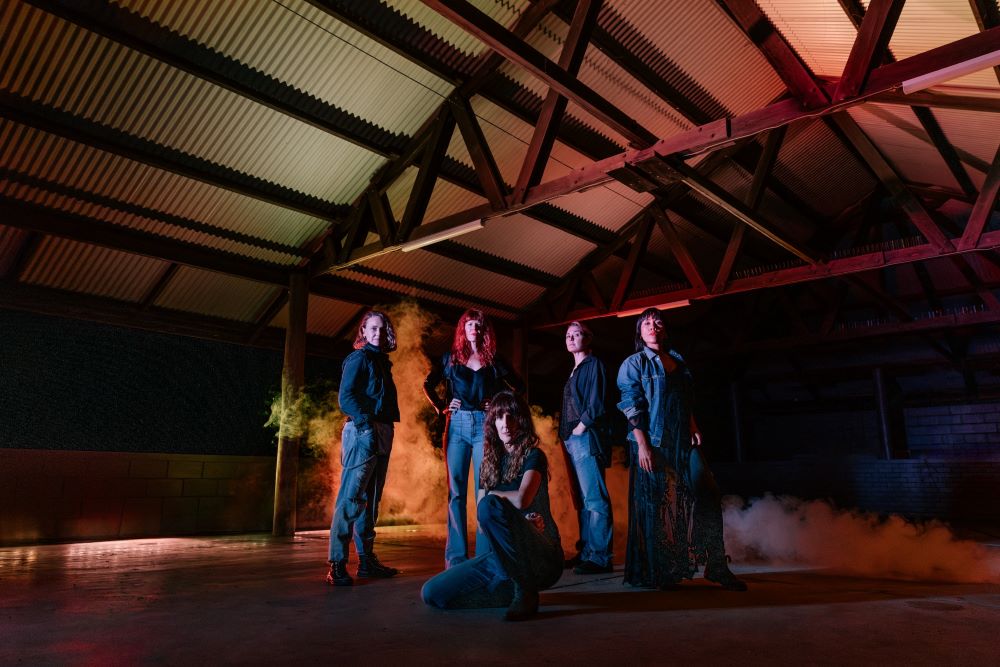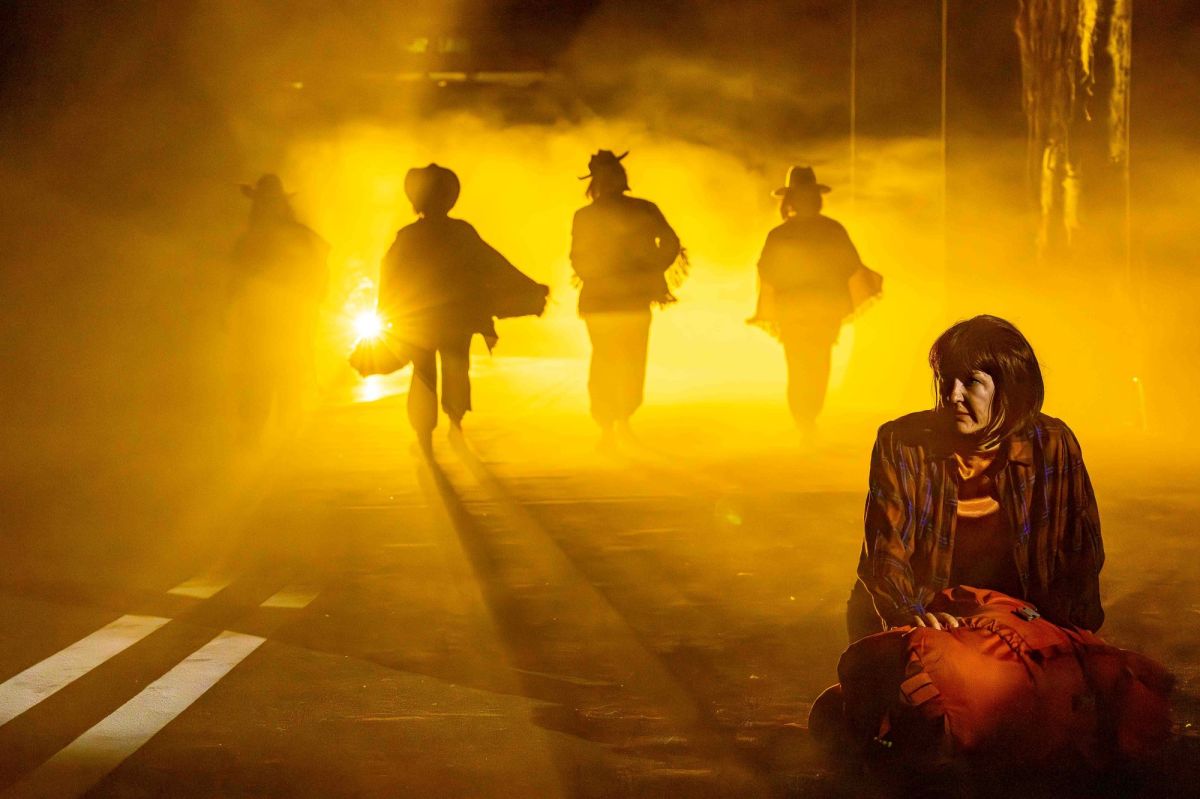Responding to disaster takes many forms. In the northern NSW city of Lismore, many residents and businesses are still recovering from the devastating floods of 2022. Among those adjusting to post-flood life is local theatre company, NORPA (Northern Rivers Performing Arts).
NORPA’s former venue at Lismore City Hall remains unusable due to the intensity of the floods and the damage they caused; consequently, the company has adapted its programming style to reflect the new reality faced by those living and working in the Northern Rivers region.
‘NORPA is still in recovery from what was a huge event, and in losing our home at Lismore City Hall, it’s provided us, I guess, with more opportunities to create site-specific or place-based work,’ explains Julian Louis, NORPA’s Artistic Director.
NORPA has a long tradition of creating site-specific work, including 2022’s Love for One Night at the Eltham Hotel north-west of Lismore; 2016’s Dreamland, which told the stories of a small community hall in the nearby township of Eureka; and Railway Wonderland, which was devised and presented at Lismore’s disused train station in sold-out seasons in 2012 and 2015.
Last year, NORPA announced its plans to convert an existing pavilion at the Lismore Showground into a theatre-making hub, and it’s here that the company is about to stage a reimagined version of its 2018 production, Wildskin – recast and readapted for the non-traditional venue it which it will now be presented.
Wildskin, which is described as part road movie and part bush thriller, was originally conceived for and staged in NORPA’s proscenium arch theatre at Lismore City Hall. Reimagining the work as a site-specific production at the Lismore Showgrounds has presented the company with a number of creative but far from insurmountable challenges.
As well as ‘going to a bigger form for imagery and metaphors’ in terms of the production’s style, a process Louis described as ‘quite exciting’, remounting the work – albeit in an entirely different environment – has enabled the Wildskin team to revisit numerous aspects of the production, including moving what was already a physically heightened production further away from traditional stage naturalism.
‘I think this [version of the] production has become more fictionalised and more theatrical. The beginning and the end are different and we’ve also got a different cast. In fact, we’ve now got a cast full of actors. In the first iteration, we had more physical theatre performers – artists with backgrounds across circus and physical theatre and dance. And with this production, purposely, I wanted more actor minds in the room to work on the storytelling,’ Louis says.
As a theatre-maker for whom devising work is central to his practice, Louis quickly adds that the script ‘isn’t leading everything’.
He continues: ‘We have a very actor-driven process, so this opportunity to then take what was already strong in the work and ask questions pre-production, to prepare and certainly rewrite and develop, but then also the chance to learn about the genre we’re working in – how to push into the horror trope in moments, how to create further excitement in the audience and also to identify where the comedy is – trying to understand those things and those nuances is a great opportunity, and we really embrace that. And this show is certainly stronger and, really, we’re having a great time with those learnings as a result.’
The value of revisiting a work
Restaging and reimagining Wildskin is providing the production’s creative team with the chance to further refine and rework the play’s central story – a rare opportunity in Australian theatre culture.
‘It’s a weakness in Australian theatre-making that we don’t have more opportunities to create a work over a number of venues,’ Louis tells ArtsHub. ‘We don’t often have that opportunity to develop a work with the audience, in front of an audience, though I think it happens more so with festivals, possibly, than with the more conventional theatres and venues that are programming work. So this opportunity is huge.’
Read: Theatre remount culture needs a reboot
Charlotte Haywood, the set and costume designer for both the original production of Wildskin and its new, reimagined iteration, was excited by the opportunity to revisit the work and reimagine it for a dramatic new space.
‘[The Showgrounds’ pavilion] is like a 60-metre long warehouse, and looking at the scale of things, obviously it is a beast of a space, and so it is quite intimidating. Also, we’re working outside of the convention of theatre; we’re having to create a theatrical space, as it were. But being able to highlight the architectural vernacular of that site, and actually of the whole Lismore Showgrounds, that’s been fantastic,’ Haywood says.

As the production’s designer, Haywood has leaned into the idea of representing Lismore’s recent past in this new iteration of Wildskin by salvaging and repurposing elements of the set.
‘It’s been exciting to be able to look at how we can use that idea of assemblage, or the idea of objects that are decayed and which carry that history in their materiality, and being able to create these assemblages, either through set pieces or prop pieces or costumes,’ she tells ArtsHub.
While the pavilion’s scale makes it harder to capture or emphasise intimate moments and details, the skills of Haywood’s fellow creatives – as well as her own skills outside of her design practice – are helping to address such challenges.
‘That’s where leaning into sound design and being able to create an immersive experience through other senses is really important. And being an interdisciplinary artist, outside of a designer, being able to tap into multisensory modes, I think, is important in this day and age in terms of tapping into our visceral experience,’ she says.
‘So sound is a huge element, and also lighting, because of the scale of the space, but also remembering that NORPA is a regional theatre company, and so the scales of our projects or budgets often aren’t as big as the urban projects. Having to work collaboratively and creatively to be able to realise something that audiences will be able to walk away from with a certain flavour or feeling within them, that’s what I’m really seeking,’ Haywood explains.
In order to achieve such aims, Haywood is collaborating with a number of artists from the Lismore region to help her bring the new version of Wildskin to life.
‘For instance, there’s Immortal Soil, who work in botanical assemblages; there’s also Sarah Etheridge, who is a cardboard artist. So I’m really looking to work with artists that I can share this vision with, so that together we can build these fertile spaces for creativity to flourish.’
This concept of constructing stimulating creative spaces for the audiences who will be attending Wildskin – some of whom may even get to camp overnight at the Lismore Showgrounds – also extends to the environment outside the performance space, not just within the pavilion itself.
As Louis explains: ‘Working where we do in a regional context, people really crave experiences. They want to encounter art and creative experiences in fun, dynamic ways. And we were doing this before the flood – we were always creating these works through my signature productions, if you like. But I guess one of the challenges that we’ve encountered [with Wildskin] is: where are the food and beverages? So in this location, we’ve actually got a separate pavilion that’ll have a pop-up restaurant and bar.
‘I’ve spent a lot of time thinking about how to make this whole experience slightly more immersive – not that this is immersive theatre,’ he hastens to add.
Read: The National Circus Festival: growing grassroots circus in the regions
Like Haywood, Louis notes that reimagining Wildskin for the pavilion at the Lismore Showgrounds has not been without its challenges, but responding to them has further enriched the production overall, he believes.
‘It’s a challenge in that it’s a 60-metre space. Just from the seating alone, we’re looking at a very long space. So entrances are different, time is different, but also so are the number of images that we can create in that space now, which is incredible. That length, that depth is really exciting. So we’re creating much more of a visual theatre production than ever before.’
The ability to reimagine Wildskin in its new setting is ultimately to the work’s benefit, Louis argues.
‘With knowledge and with time, you get to improve any piece of art. So everything is heading in the right direction to make something great,’ he says.
‘I guess in some ways my frustration now is, well, not my frustration, but – I would love other people in my industry to see it, because I think we make exciting work. I travel to the city to see work all the time and I want that to go the other way. Like, come out here to see what we’re creating, because I think what we’re making here is pretty thrilling.’
The new season of NORPA’s Wildskin runs from 12-28 September at the Lismore Showgrounds, Lismore, NSW.





